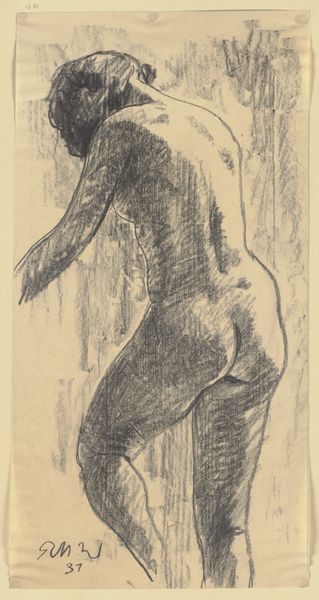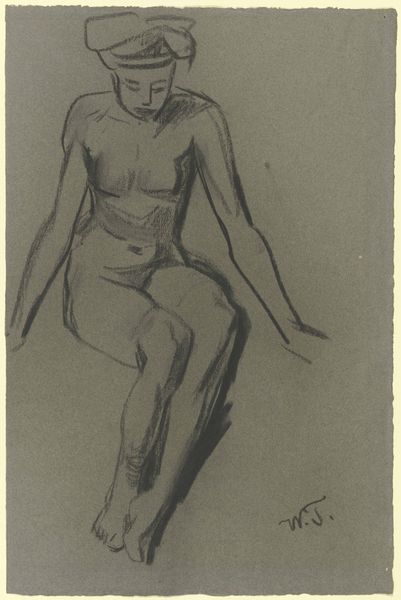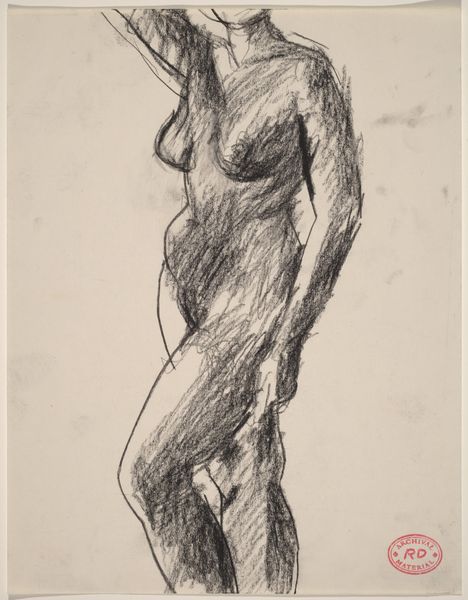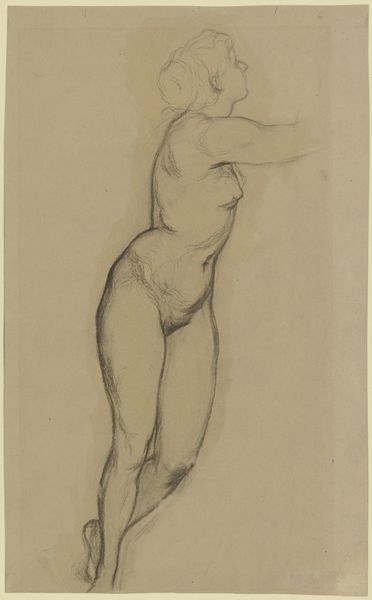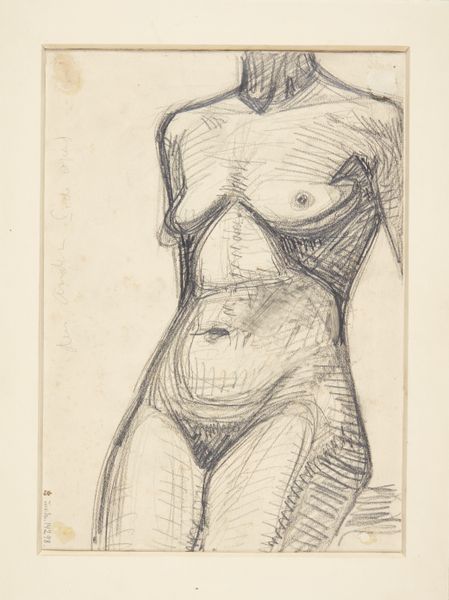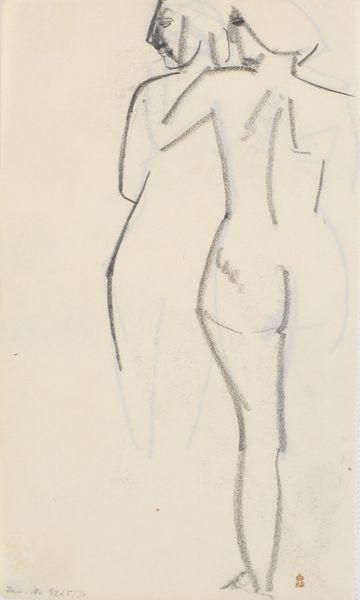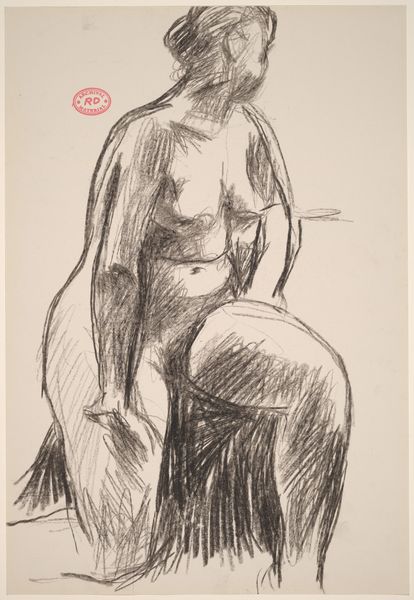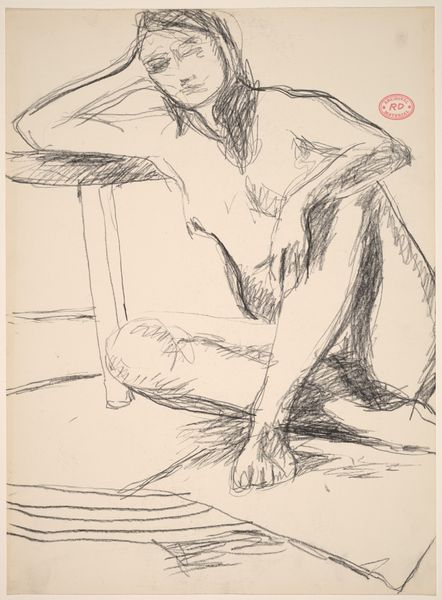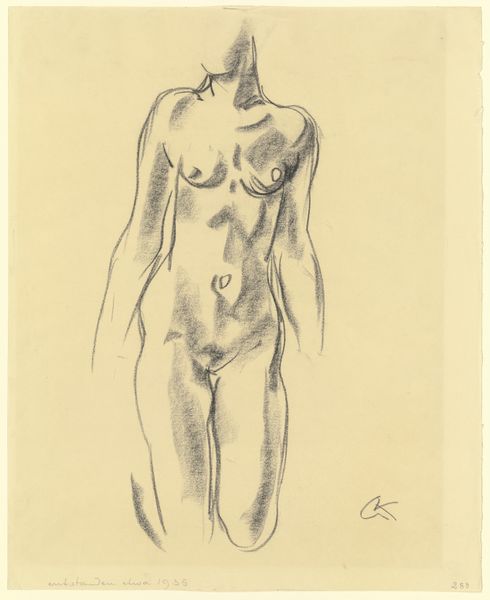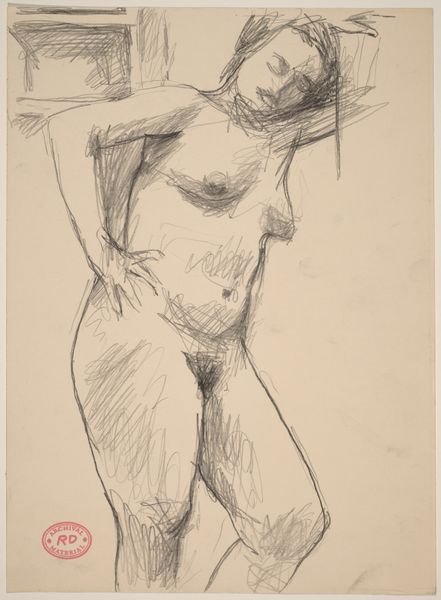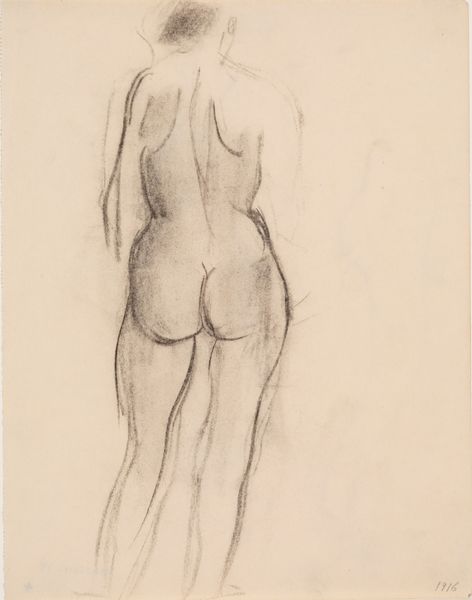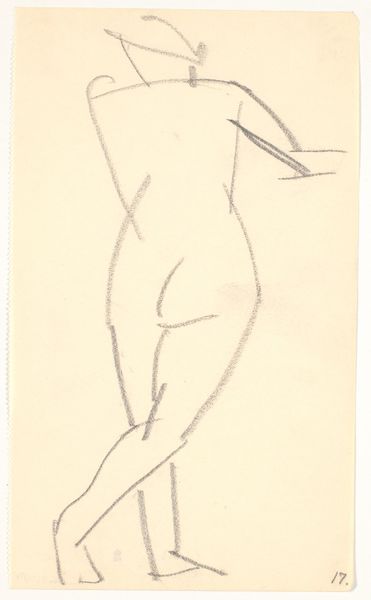
drawing, paper, pencil
#
drawing
#
pencil sketch
#
figuration
#
paper
#
pencil drawing
#
pencil
#
nude
Copyright: Public Domain
Curator: This is "Female nude from behind" by Richard Martin Werner, a pencil drawing on paper created in 1931. It resides here at the Städel Museum. Editor: Immediately, I'm struck by the almost melancholic pose. The downward slant of the figure and the stark lines lend it a weightiness, despite being a seemingly quick sketch. Curator: Indeed. The beauty lies in the economy of line, wouldn’t you say? Notice how the artist uses hatching and cross-hatching to define the musculature of the back, creating a sense of depth with just a few strokes of the pencil. Editor: I also see how this drawing, and nudes in general, have historically been perceived as a testament to an artist's mastery and a marker of academic skill. What role might institutional power have played in perpetuating and valorizing this subject matter during Werner's time? Curator: Well, in the formal analysis, the focus rests less on what is depicted and more on how it is depicted. Consider how the composition guides the eye from the nape of the neck down the spine, ultimately resting on the curves of the lower back. Semiotically, these elements combined suggest the essence of the artist. Editor: But isn't that “essence” you mention inevitably influenced by, and also reflective of, the prevailing societal gaze? A gaze often molded by and reinforced through museum walls? It brings forth questions regarding authorship and cultural authority, doesn't it? Curator: The artwork transcends time; you make very salient points in our social understanding of the nude over time, though, but look back again at the piece in terms of tonal variations – how the artist contrasts light and shadow in an incredibly evocative manner, to underscore how this drawing really focuses on the purity of form above all else. Editor: Point taken, I am particularly reflecting on my reaction and biases that can inform art consumption, so this exercise becomes as much self-critical as artful criticism. Thanks for engaging. Curator: And thank you for raising questions on the institutional frameworks around appreciating artworks and collections!
Comments
No comments
Be the first to comment and join the conversation on the ultimate creative platform.
